|
BULB LOG 12 --- 19th March 08
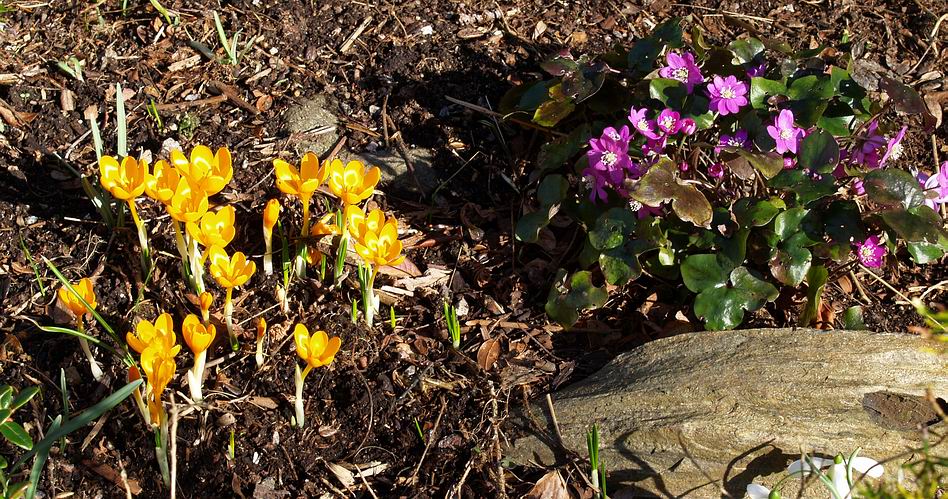
Crocus gargaricus and Hepatica
One of the great companion plants to grow with the early spring bulbs in the garden are the Hepaticas. I would normally cut off last years Hepatica leaves in January before the flower stems start to elongate but, because I was in New Zealand, I did not get around to it this year so I will just leave them on and see what difference it makes. The obvious difference is that the flowers stems have to lengthen so the flowers can appear above the leaves. I would have loved to have been at the Hepatica Day down at Wisley last weekend but I was already committed to speaking to some groups in England. However I have been enjoying some of the delights on display at Wisley in Paul Cumbleton's fortnightly 'Wisley Log' on our web site. Paul's pictures of Hepaticas in the latest log are just stunning and appear to jump at you out of the screen. There are also a lot of additional pictures from that event on the Hepatica thread on the forum pages - thanks to John Gennard (a great hepatica grower) and others who posted these
pictures that give those us who could not attend a real flavour
of what we missed.
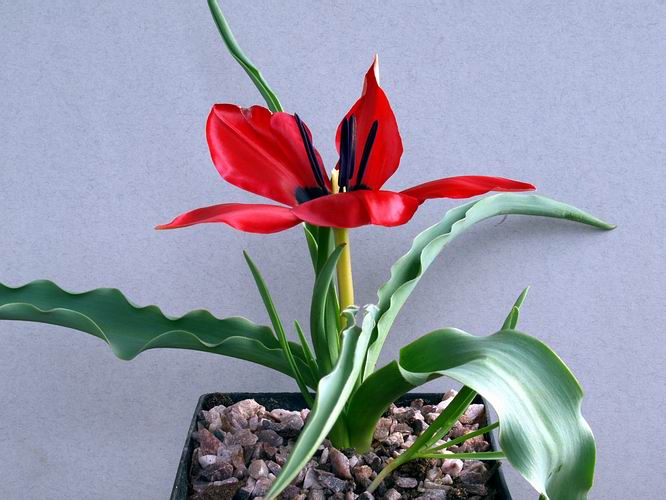
Tulipa stapfii
One of the pleasures of visiting a plant show, apart from seeing all the wonderful plants on the benches, is looking at the plants for sale. Regular readers of the Bulb Log will know of my reluctance to buy bulbs in case I introduce diseases; one good exception to this is when you can buy the bulbs in full flower. Two good reasons for buying them in flower is one you can be sure you are getting the correctly named plant and secondly you can give it a good health check. Since reading Richard Wilford's excellent monograph on Tulips I have been keen to increase my collection of them. Tulipa stapfii is a beautiful dwarf tulip closely related to T. stylosa. T stylosa was described by Otto Stapf from Iranian material in 1885 and it is believed that Tulipa stapfii is an extreme form of this variable species differing in having more and also wider leaves, crowded near the base.
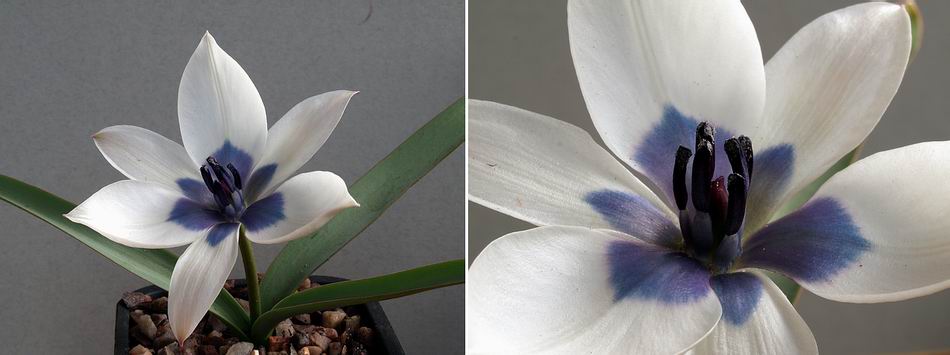
Tulipa humilis Albocaerula Oculata
Surely one of the most beautiful and sought after dwarf tulips is Tulipa humilis 'Albocaerula Oculata' - that stunning colour combination of a large flower with a short stem is just perfection. I gave the bulbs I bought as good a visual health check as I could by looking very carefully at the leaves then holding them up to the light to look through them. I was checking to make sure that there were none of the tell tale signs of virus. Often the symptoms of a virused plant do not appear obvious in the newly emerging leaves but if you look at them with the light shinning from behind them you will see early signs. Needless to say all the bulbs that I bought looked perfectly healthy.
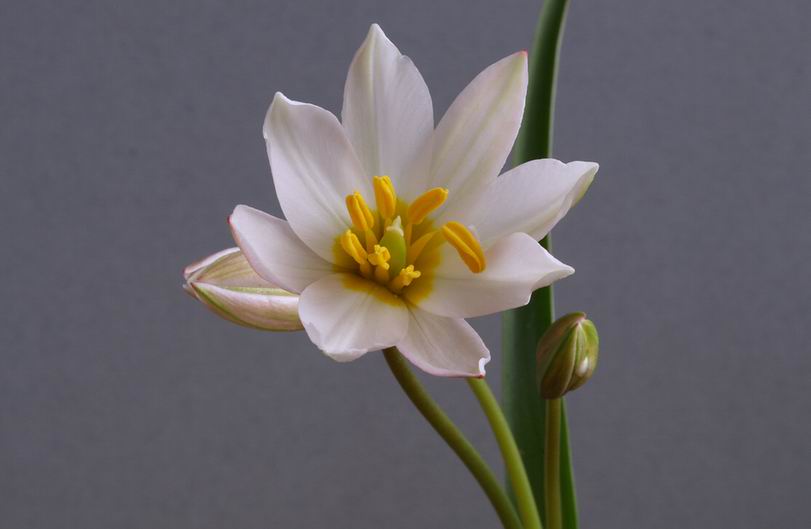
Tulipa cretica
I have wanted try Tulipa cretica again ever since I saw them growing in a bulb field collection of species tulips in Holland some year ago but I was reluctant to order them as dry bulbs for the very reasons I give above. Buying bulbs this way can be more expensive but the security of the health check and confirmation of the correct plant is well worth it - and I think I got them at a cost well below the price that I have seen of dry bulb. My task now is to keep an eye on these plants to make sure that no latent symptoms appear and to try and get a good seed set - then I can build up my stock.
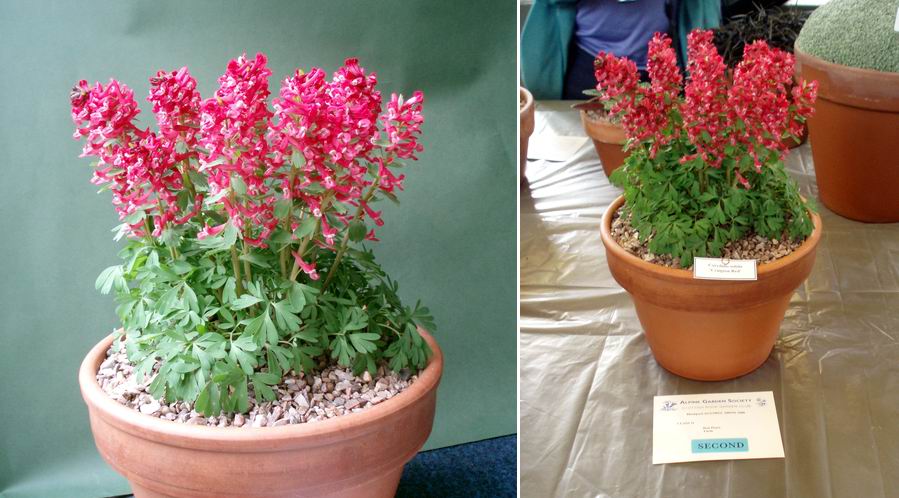
Corydalis Craigton Red
One of my great delights at the show was seeing one of the plants that I had raised, Corydalis 'Craigton Red' entered in the show. I have never grown it in a pot for showing so I was delighted to see Don Peace had put a lovely pan of it on the bench. I saw it from across the hall and thought that is a good form so went over to see it - it only got a second place but it was beaten by the Farrer Medal winning pot of Corydalis popovii shown by our friends Ian and Carole Bainbridge.
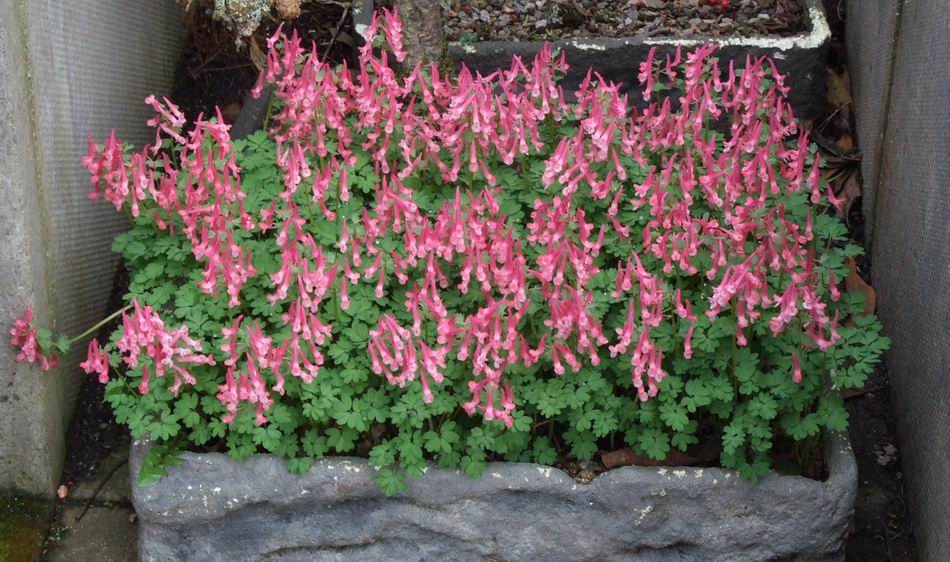
Corydalis solida
When I grow and select forms of Corydalis I take great care to keep them true and not to get them mixed up. I do this by growing them in troughs like the one above or in plunge baskets and I lift and replant them every year. Any small tubers that may be self sown seedlings are planted out into the mixed beds and I only keep the tubers that are obviously from vegetative increase.
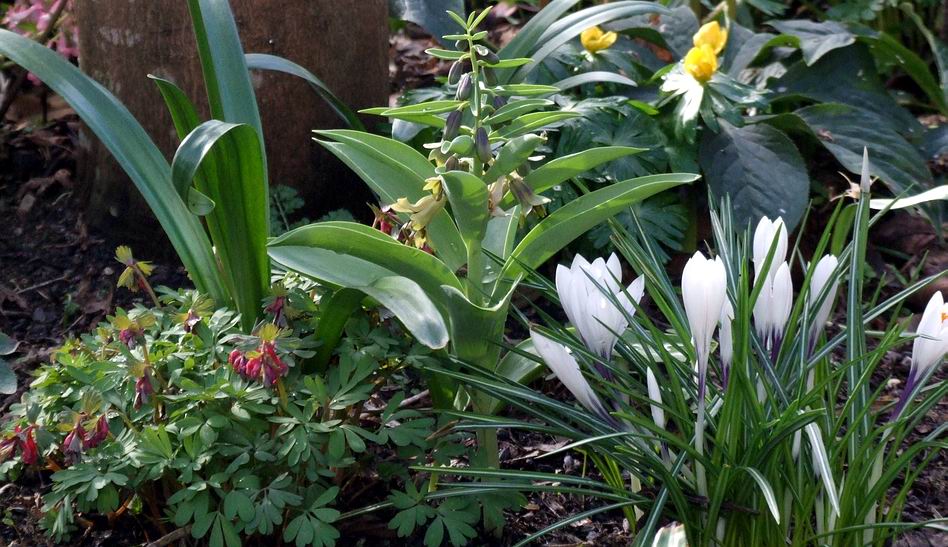
Fritillaria sewerzowii in garden
The garden is a mass of flowers with the Eranthis still hanging on because of the cold, Crocus in full flower and Corydalis now coming out plus the early riser Fritillaria sewerzowii starting to put in an appearance. A few years ago I decided to plant out most of my bulbs of Fritillaria sewerzowii and it has done very well. I think it looks better in the garden than it does in a pot where it can often be too big and out of scale - I do continue to grow a number of forms in pots just in case we lose them in the garden.
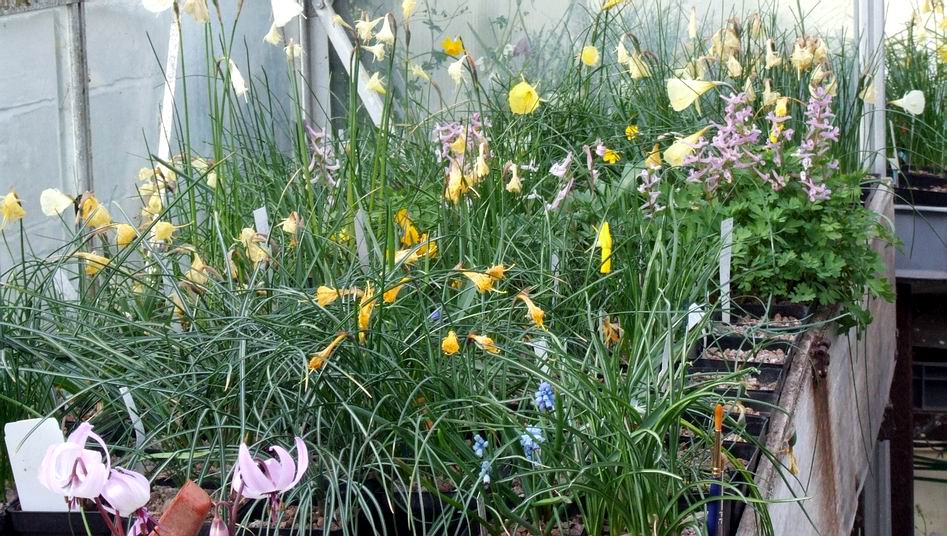
Bulb house
In the bulb house many of the early flowering Narcissus and Crocus flowers are going over and the seed capsules are starting to swell up. This is also the time when the bulbs will take advantage of the favourable growing conditions to build up their store of food for next year.
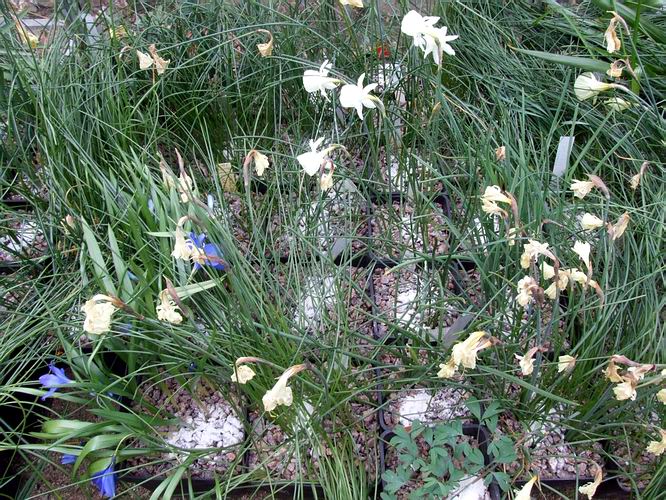
Narcissus flowers going past
It is also over the next month or two that next year's flowers will be formed inside the bulbs so it is important to provide them with the nourishment that they need and that is Potassium also called Kalium.
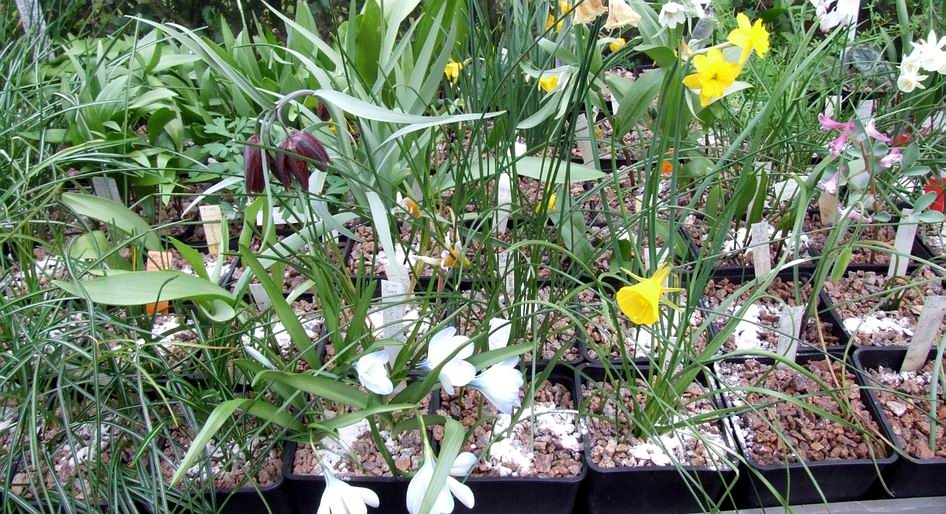
Potash feeding time
Following my normal pattern I sprinkle some sulphate of potash on top of each pot and then I water it in. I have to be a lot more vigilant when I feed the bulbs now that I am growing them in plastic pots. Because the plastic pots do not dry out so quickly I do not need to water them so often and so have less opportunity to get the food into them than I used to when I used clay pots.
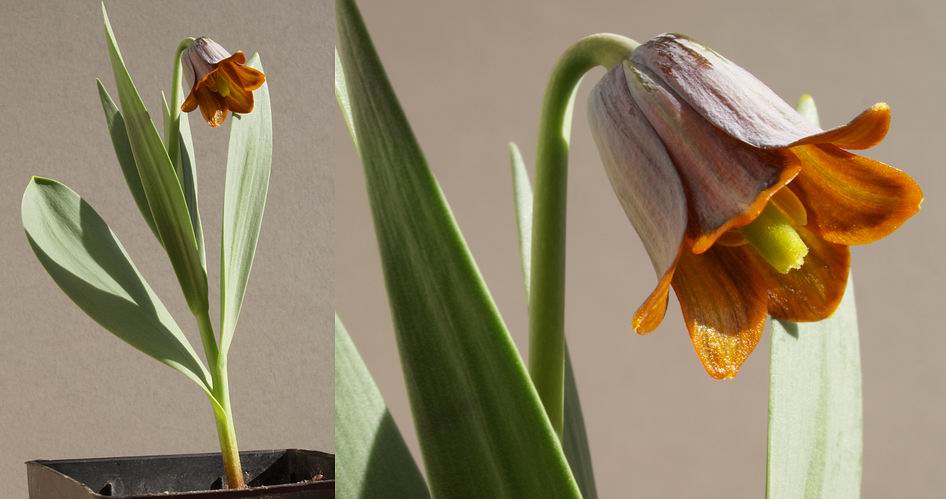
Fritillaria pinardii
With the weather turning cold and windy I have been driven inside where I can spend some time in the warm taking plant portraits with my new digital Olympus SLR. The advantage of having a macro lens which can be shut down to f22 to give me as good a depth of field as is possible is one of the controls that I missed with the fixed lens digital cameras. Fritillaria pinardii is a very variable species which in my view seems to merge with Fritillaria carica; certainly that is my observation from all the cultivated material I have grown and seen - I have not seen them in the wild.
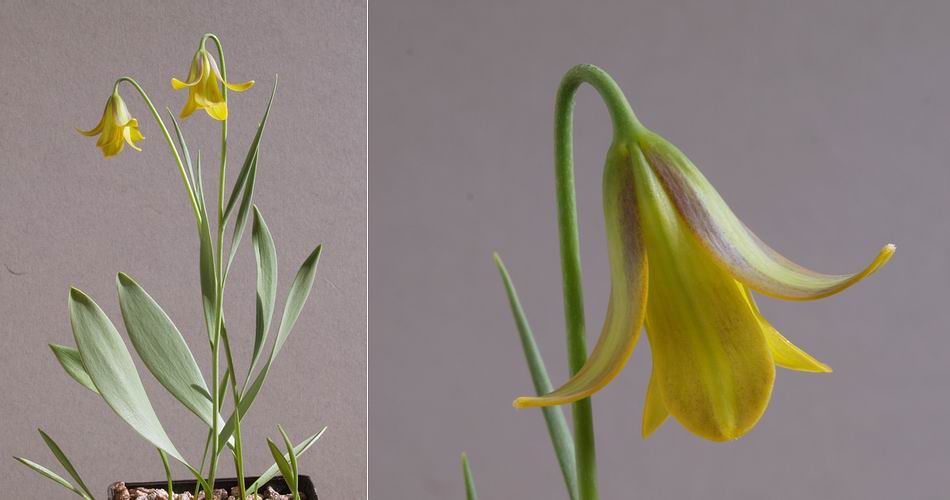
Fritillaria pinardii yellow
This is a yellow form of Fritillaria pinardii which has just a hint of brown running down the petals.
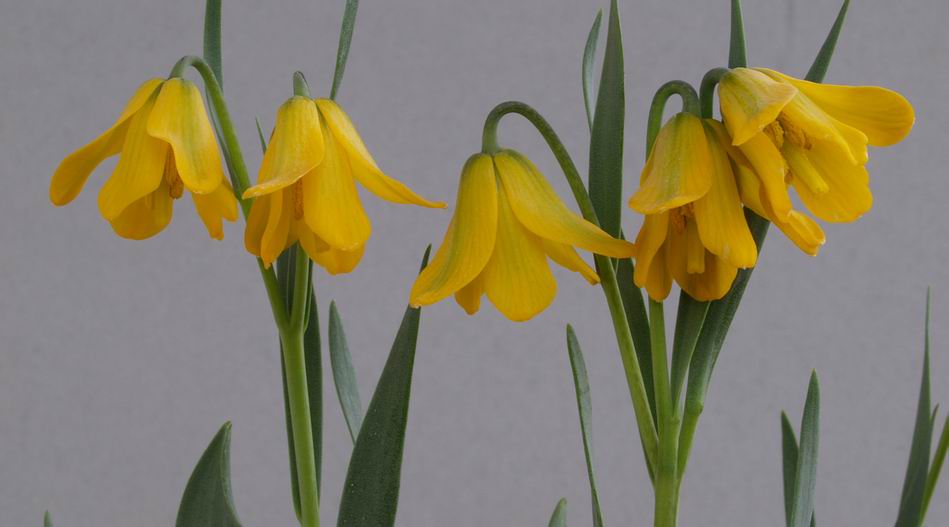
Fritillaria carica
Here is one of the many forms of Fritillaria carica that I have - there is not a lot of difference.
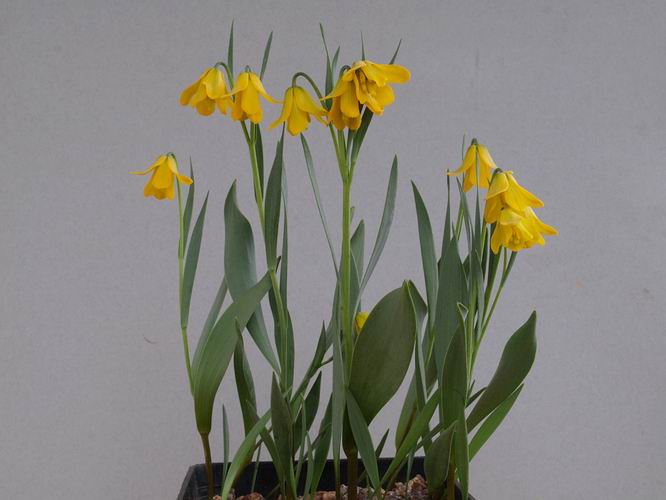
Fritillaria carica pot
This form of Fritillaria carica can have three flowers to a stem, the other seedlings from the same batch of seed do not.
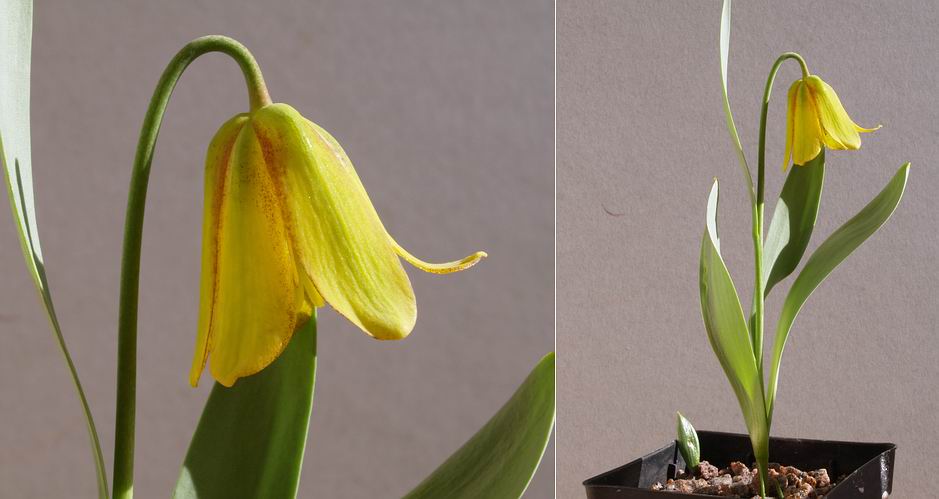
Fritillaria aurea x pinardi
Many fritillaries will hybridise when they meet in cultivation, as indeed the also do in the wild; this is a nice flower intermediate between the two parents Fritillaria aurea and F. pinardi. It is a fully fertile hybrid producing seed most years and it was from seed that I got it originally. It is just as well it produces seeds because it does not increase from the bulb very readily.
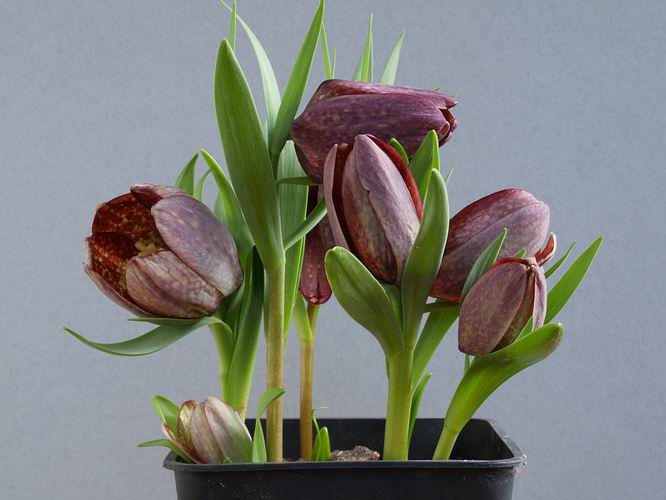
Fritillaria tubiformis
The final picture for this week is the very beautiful Fritillaria tubiformis, with its large flowers on very short stems. As you will observe the flowers are opening as they emerge and the stems slowly lengthen as the flowers mature, in seed they can be 30cms tall.
^ back to the top ^
|

